I'm trying to simulate Newtonian gravity with C++ and GLM. I'm using GLM vectors and this equation I found on Wikipedia
I translated this into code:
const static double g_const = 6.67430E-11;
void gravitate(object& obj1,object& obj2) {
glm::vec2 distance = glm::abs(obj2.position-obj1.position);
glm::vec2 unitvec = (obj2.position-obj1.position)/distance;
glm::vec2 force = -g_const*obj1.mass*obj2.mass/(distance*distance)*unitvec;
obj2.updateForce(force);
}
The object class is structured as this
class object {
public:
double mass;
glm::vec2 velocity;
glm::vec2 position;
object(double massin, glm::vec2 pos) : mass(massin), position(pos) {;}
object(double massin, glm::vec2 pos, glm::vec2 vel) : mass(massin), position(pos), velocity(vel) {;}
void updateForce(glm::vec2 force) {
velocity+=force/mass;
}
void updatePos() {
position+=velocity;
}
void printPos(); // Not used in this example
void printVel(); // Not used in this example
}
The main function is run like this:
int main() {
object test1(massOfEarth,
glm::vec2(0, 0),
glm::vec2(0,0));
object test2(massOfmoon,
glm::vec2(distanceFromEarth,
distanceFromEarth),
moonInitalVelocity);
while (true) {
gravitate(test1,test2);
test2.updatePos();
}
}
When I run this, however, I get this output:

NOTE: Sorry for the low frame rate, it's a byproduct of converting a video to a GIF
Does anyone know what's going wrong here?
BTW the full code is available here: https://github.com/ProtoByter/GravityLaw
EDIT 1:
The y force placed on the object at the point that it suddenly speeds up is 3.5079064080620432e+26 N
whilst when it's moving at a constant speed the y force is -2.9308778146655032e+23 N
EDIT 2:
For clarification I'm using the vector form of newton's universal law of gravity, on wikipedia this is defined as a vector quantity whilst glm::distance returns a double so is not suitable